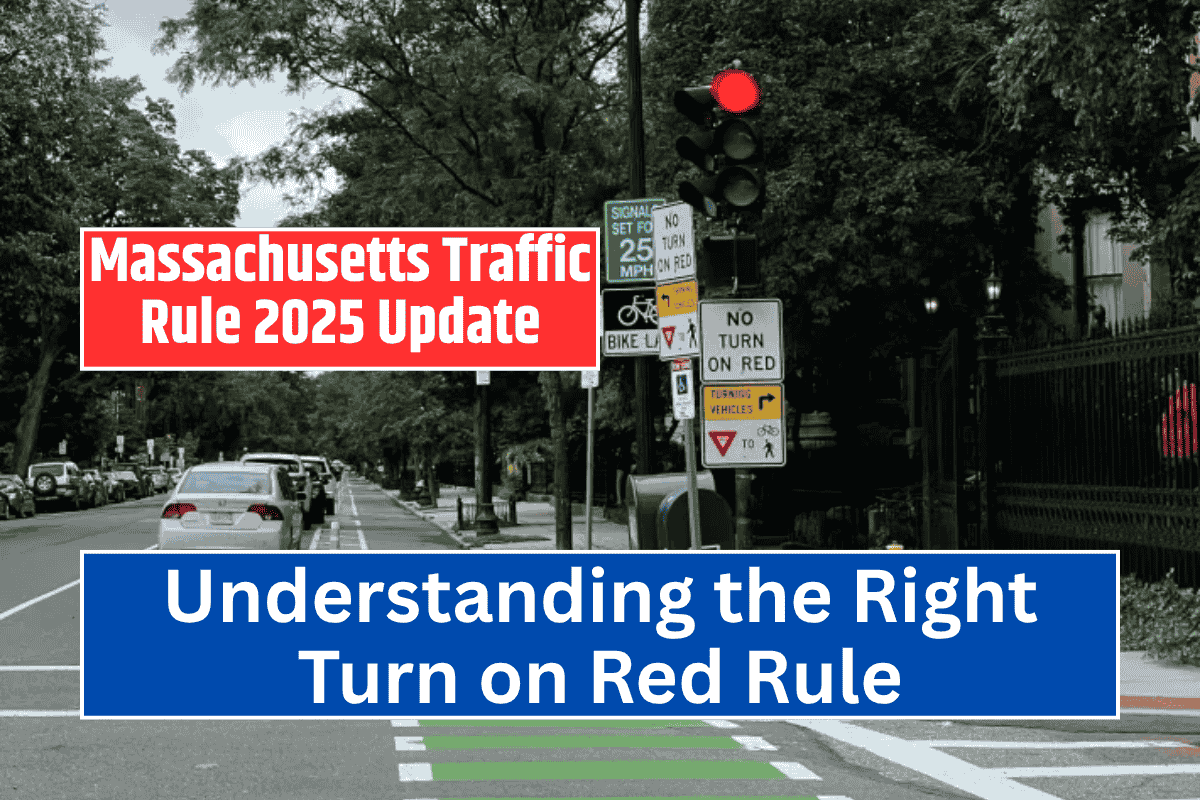If you’re driving in Massachusetts, understanding right-of-way laws is crucial for ensuring safety and avoiding accidents. One of the most important and frequently misunderstood rules is the right turn on red. This rule, along with other traffic regulations, helps to keep the roads organized and reduce the likelihood of collisions.
Here’s an overview of the key points you need to know about right-of-way laws in Massachusetts, especially the updated right turn on red rule for 2025.
What You Need to Know About Right-of-Way Laws in Massachusetts
Right-of-way laws are essential for preventing confusion on the road. They dictate who has the right to proceed first in different driving situations, ensuring smoother traffic flow and reducing accidents.
These rules are only effective when drivers understand and follow them. Here’s a breakdown of some common right-of-way scenarios in Massachusetts:
At a Three-Way or Four-Way Stop
When approaching a three-way or four-way stop, the vehicle that arrives first has the right to proceed first. If vehicles arrive at the same time, the vehicle to the right has the right to proceed first, and the vehicle on the left must yield.
Remember, regardless of the situation, all drivers must come to a complete stop at the stop sign before moving forward.
When Making a Left Turn
When making a left turn, oncoming traffic always has the right of way. Even if the oncoming driver is speeding or driving recklessly, the turning motorist must wait until the oncoming vehicle passes before making the turn. Failing to yield to oncoming traffic can result in negligence and, in the event of an accident, legal consequences.
At Crosswalks
Pedestrians always have the right of way in a crosswalk, especially when crossing with a Walk signal or a green light. Motorists should exercise extreme caution, even if a pedestrian is crossing without signals. If a pedestrian has already started crossing, the driver should allow them to finish crossing before proceeding.
It’s essential to keep in mind that motor vehicle accidents involving pedestrians can result in more severe injuries, as pedestrians do not have the protection of a vehicle’s frame or seatbelts.
Right Turn on Red in Massachusetts
One of the key updates in Massachusetts for 2025 relates to making a right turn on red. In Massachusetts, drivers are allowed to make a right turn at a red light, unless there is a sign specifically prohibiting the turn. However, there are important steps to follow before proceeding:
Full Stop Required: Before making the turn, drivers must come to a complete stop at the red light.
Yield to Other Traffic: Drivers must yield the right-of-way to other motorists and any pedestrians who may be crossing at the intersection.
It’s crucial to be extra cautious when turning right on red, as this maneuver can sometimes be tricky due to visibility issues or pedestrian activity. Failing to stop fully or yield to pedestrians could lead to fines or accidents.
Other Important Right-of-Way Considerations
Pedestrians and Alcohol: Pedestrians should follow right-of-way laws but also be aware of the dangers of walking while intoxicated. Walking under the influence can be just as dangerous as driving while drunk. Pedestrians need to exercise the same level of caution on the streets as drivers do.
In Massachusetts, understanding and following right-of-way laws is essential for preventing accidents and ensuring everyone’s safety on the road.
The right turn on red rule, effective in 2025, allows drivers to turn right at a red light after making a complete stop and yielding to other vehicles and pedestrians. Always stay alert, follow the rules, and drive carefully to help make Massachusetts roads safer for everyone.












